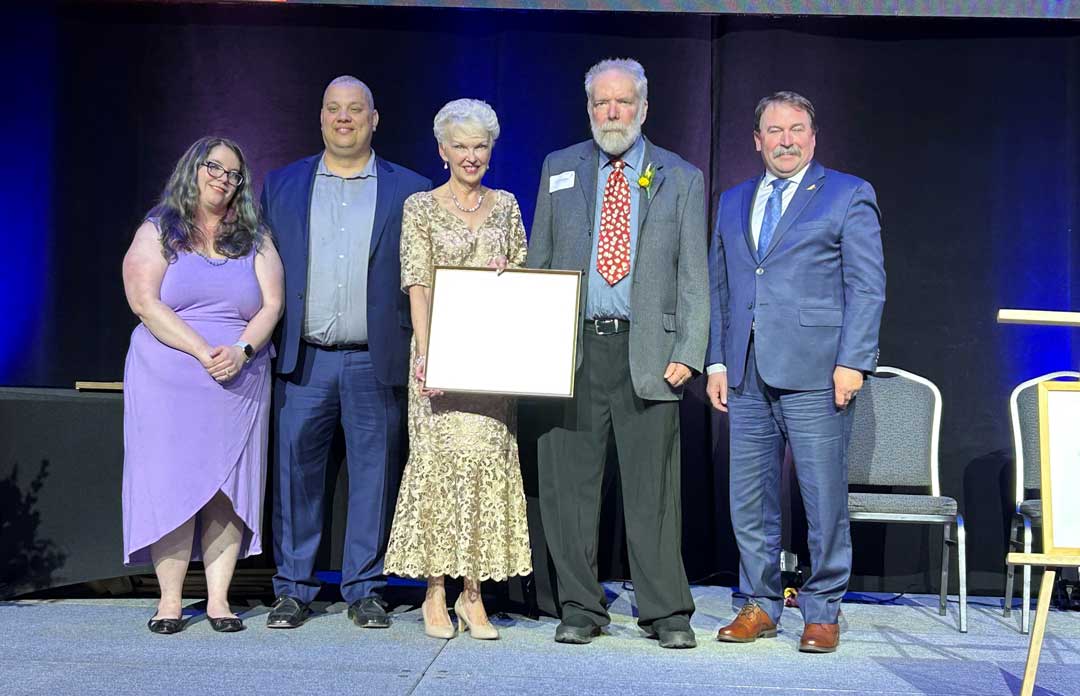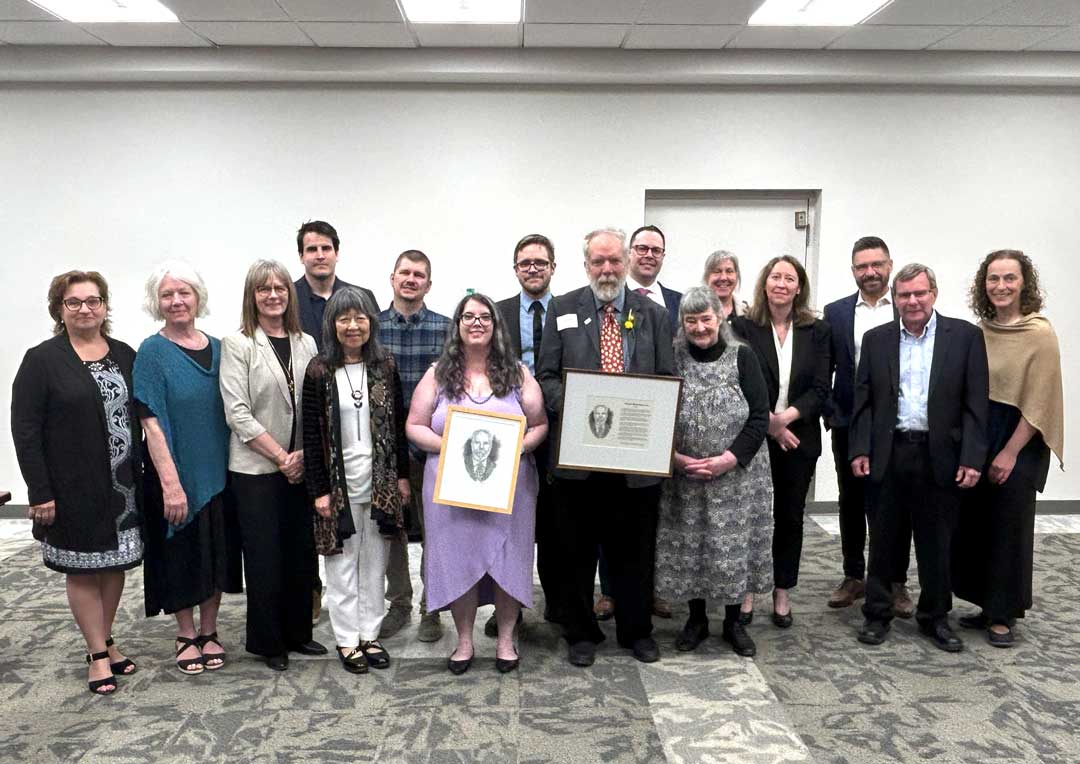
Former USask fruit breeder inducted into Saskatchewan Agricultural Hall of Fame.
Dr. Bob Bors, former head of the USask fruit breeding program was officially inducted into the Saskatchewan Agricultural Hall of Fame on April 26, 2025.
The following biography was written by the Saskatchewan Agricultural Hall of Fame committee:
As gardeners, we rarely consider the years of breeding behind the fruit we enjoy - whether haskaps fresh off hte bush or a warm cherry pie. At the University of Saskatchewan, it took more than 50- years of research to develop prairie-hardy cherries and over 20 years of haskaps to become widely available.
Dr. Bob Bors, a Professor in the Plant Sciences Department played a leading role in breeding these hardy fruits while also teaching horticulture. His work focused on fruit suited for mechanical harvesting and requiring little or no pesticides. His is the coldest major fruit breeding program in North America.
Raised in Maryland, Bob arrived in Saskatoon in January 1999 when temperatures hit a frigid -40C. Fortunately for us, he proved just as hardy as his fruit. Since then, he has bred and released nine dwarf sour cherry varieties, then haskap varieties, and one apple variety, while also maintaining the Prairie Fruit Genebank.
His work with sour cherries (Prunus cerasus) was built on the breeding effortsd of Les Kerr and Rick Sawatsky. Bob selected the best cherries for flavour, size, ease of pitting, and mechanical harvesting. He wanted varieties that would appeal to home gardeners and commercial growers alike.

The University of Saskatchewan hosts Canada's only haskap (Lonicera caerulea) breeding program. Also known as blue honeysuckle, these berries were first planted at the university in 1997 by Rick Sawatsky. Bob tasted them in 2000, began breeding them in 2001, and has been excited ever since! He amassed one of the world's most diverse haskap collections, growing thousands of seedlings from Europe and Asia and collecting over 1,500 wild plants from across Canada.
His goal: to develop large, flavourful fruit that detaches easily and is suited for mechanical harvesting. To achieve this, he crossed varieties from Russia, Japan, the Kuril islands, and Canada's boreal forest, recognizing the need for mechanization in Saskatchewan's labour-scarce agriculture.
Bob's leadership attracted a strong volkunteer base, inclkuding farmers and Master Gardeners. He worked closely with growers to test haskap as a commercial crop and has given over 240 talks to gardening clubs and industry groups. Over his career, he released about 20 fruit varieties.

